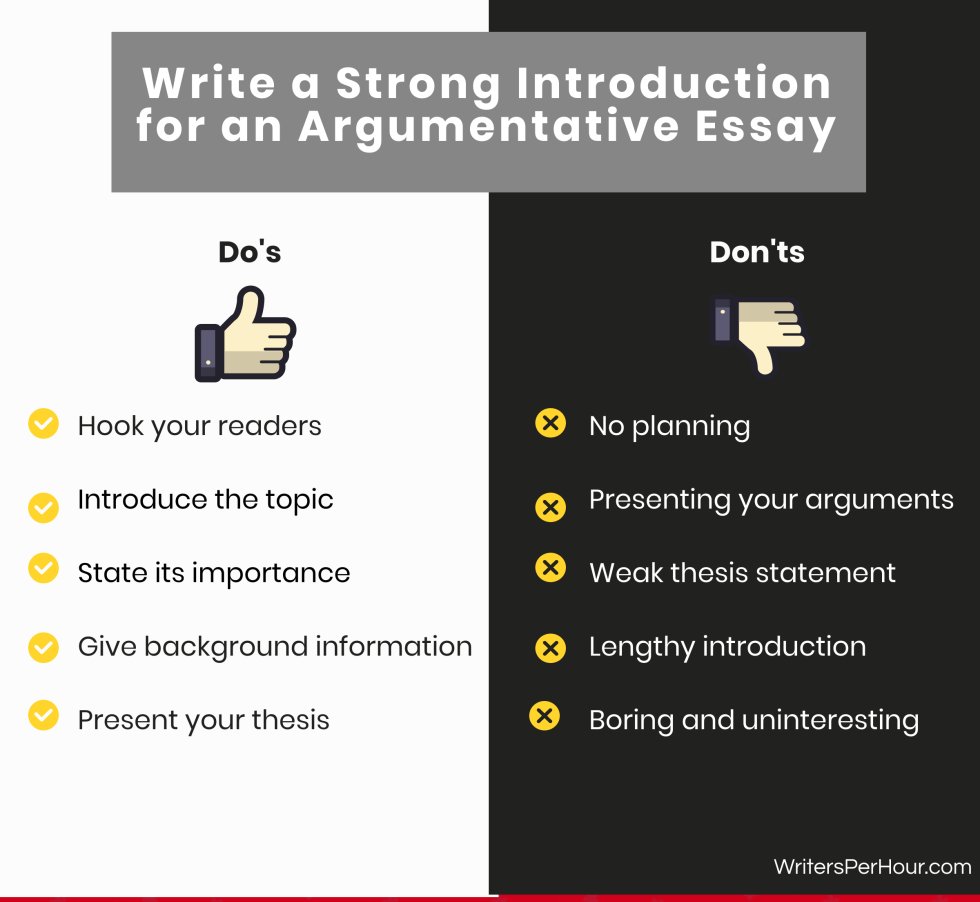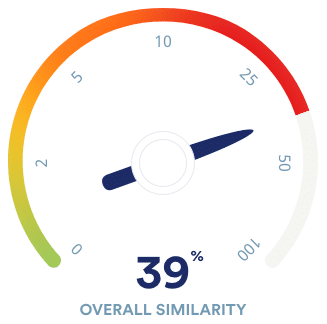
There’s a lot riding on introductions. After all, it’s the first thing people read and it gives an indication of what the rest of your essay is going to be like.
By doing this, you waste precious word count on not-so-important aspects of the paper which could have been used to justify your arguments/claims with supporting evidence and examples.
- Specific
- Debatable
- Logical
- Crisp
Students often get swayed while writing introductions without realizing that the main portion of the essay is yet to come.
How to Start an Argumentative Essay on a Strong Note
So you’ve introduced them to the topic and stated its importance. Now, before you proceed to take a stand and make your arguments, it’s important to establish context and give background information.
After writing an enticing hook, you need to go on to introduce your topic which includes what you’re going to be writing about.
“First impression is the last impression”, they say and rightly so which is why writing an introduction for an argumentative essay is so critical.

- Catch your reader’s attention.
- Give background on your topic.
- Present your thesis—the central point of your essay.
The “hook” is the first sentence of your essay introduction. It should lead the reader into your essay, giving a sense of why it’s interesting.
- An opening hook to catch the reader’s attention.
- Relevant background information that the reader needs to know.
- A thesis statement that presents your main point or argument.
To write a good hook, avoid overly broad statements or long, dense sentences. Try to start with something clear, concise and catchy that will spark your reader’s curiosity.
Step 4: Map your essay’s structure
It’s especially important to make sure your thesis statement accurately represents what you do in the essay. If your argument has gone in a different direction than planned, tweak your thesis statement to match what you actually say.
For this reason, it’s often a good idea to wait until later in the writing process before you write the introduction paragraph—it can even be the very last thing you write.
Without a clear thesis, an essay can end up rambling and unfocused, leaving your reader unsure of exactly what you want to say.

When writing an introduction, you should typically use a ‘general to specific’ structure. That is, introduce the particular problem or topic the essay will address in a general sense to provide context, before narrowing down to your particular position and line of argument.
Don’t be tempted to start your essay with a grand generalisation, for instance: ‘War has always been a problem for humanity….’, or ‘Since the beginning of time…’. Instead, make sure that your initial sentence relates directly to the problem, question or issue highlighted by the essay topic.
The introduction usually starts by providing some background information to your particular topic, so the reader understands the key problem being addressed and why it is an issue worth writing about. However, it is important that this is brief and that you only include information that is directly relevant to the topic.
"Stating your position" can be a single sentence answer to the essay question but will often include 2-3 sentences explaining the answer in more detail.
Key elements of an introduction
State your position on the topic (also referred to as your main argument, or contention, or thesis statement). Make sure that you are directly answering the question (and the whole essay question if there is more than one part!).
An essay is not like a mystery novel which keeps the reader in suspense
This might also be an appropriate place to introduce the reader to key terms and provide definitions, if required.

For this reason, it’s often a good idea to wait until later in the writing process before you write the introduction paragraph—it can even be the very last thing you write.
Everything in the introduction is relevant to the main body of the essay.
When you’ve finished writing the essay body and conclusion, you should return to the introduction and check that it matches the content of the essay.
This introduction to a literary analysis essay, about Mary Shelley’s Frankenstein, starts by describing a simplistic popular view of the story, and then states how the author will give a more complex analysis of the text’s literary devices.
Step 5: Check and revise
This introduction to a short expository essay leads into the topic (the invention of the printing press) and states the main point the essay will explain (the effect of this invention on European society).
Particularly in longer essays, it’s helpful to end the introduction by signposting what will be covered in each part. Keep it concise and give your reader a clear sense of the direction your argument will take.
As you research and write, your argument might change focus or direction as you learn more.

So before you think about writing your intro, ask yourself: Is my essay topic specific, focused, and logical? Does it convey an issue or question that I can explore over the course of several pages? Once you’ve established a good topic, you’ll have the foundation you need to write an effective intro paragraph.
However, the thesis statement doesn’t give us any details about why the writer has made this claim or why this will help American families. There isn’t an essay map that helps readers understand what points the writer will make in the essay.
So what’s the purpose of an intro paragraph? As a reader’s first impression of your essay, the intro paragraph should introduce the topic of your paper.
When it comes to how to start an introduction paragraph, o ne of the most common approaches is to start with something called a hook.
Tip 2: Narrow Your Topic

So, what counts as context for an intro paragraph? Context can be any important details or descriptions that provide background on existing perspectives, common cultural attitudes, or a specific situation or controversy relating to your essay topic. The context you include should acquaint your reader with the issues, questions, or events that motivated you to write an essay on your topic. and that your reader should know in order to understand your thesis.
In general, an intro paragraph is going to have three main parts: a hook, context, and a thesis statement. Each of these pieces of the intro plays a key role in acquainting the reader with the topic and purpose of your essay.
- A discussion of what an introduction paragraph is and its purpose in an essay
- An overview of the most effective introduction paragraph format, with explanations of the three main parts of an intro paragraph
- An analysis of real intro paragraph examples, with a discussion of what works and what doesn’t
- A list of four top tips on how to write an introduction paragraph
Once you’ve written your entire essay, consider going back and revising your intro again. You can ask yourself these questions as you evaluate your intro:
